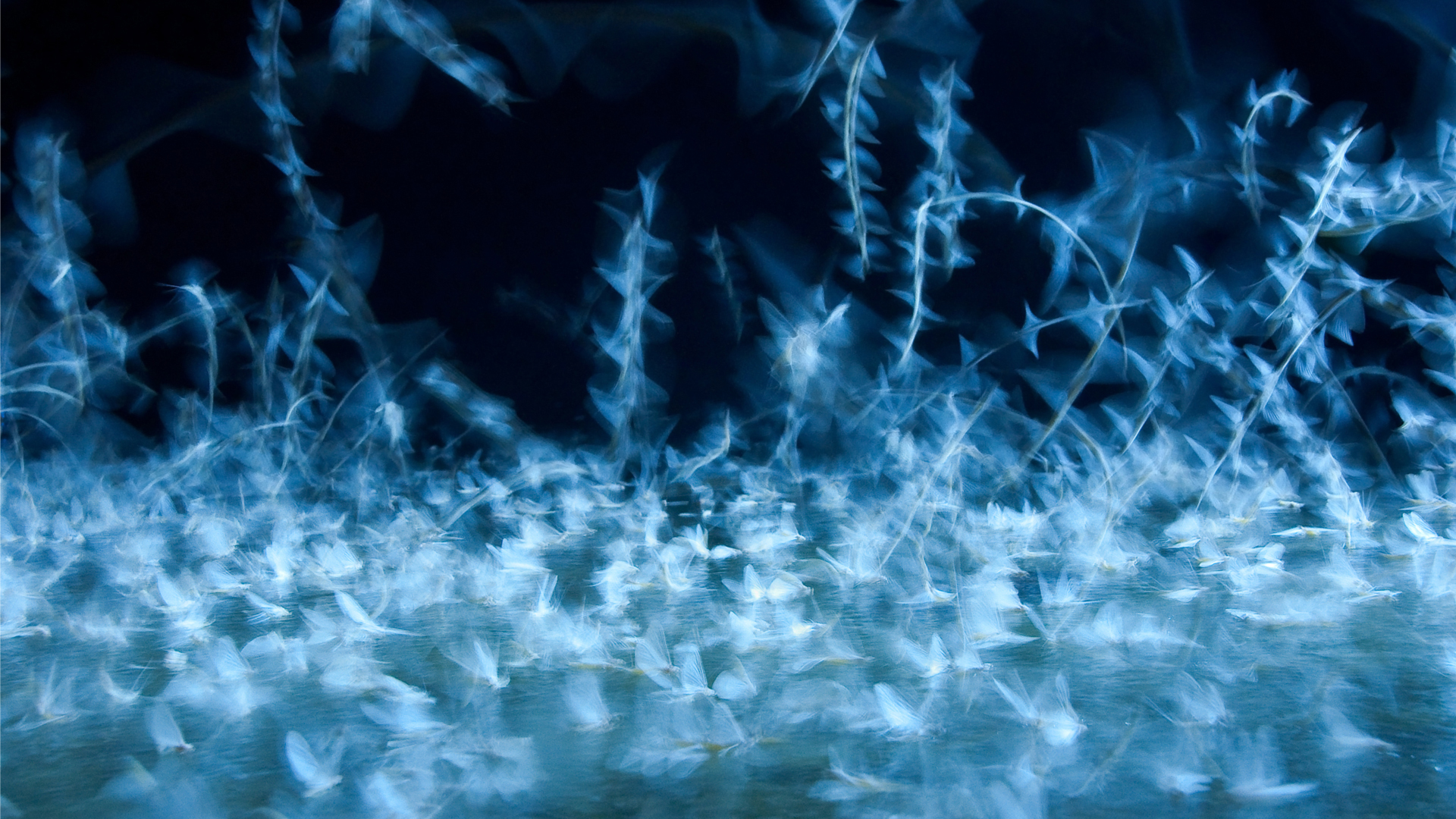Millions of Stunning Danube Mayflies Swarm This Year, Saved by Hungarian Invention
The 'Blooming of the Danube' has reached its peak, with the number of Danube mayflies swarming this year being orders of magnitude higher than last year. Light barriers developed by Hungarian researchers can prevent these stunning insects from flying over bridges and crashing onto roads while laying their eggs. The devices installed on the Árpád Bridge in Budapest have performed well in recent tests.

Photo by Imre Potyó
György Kriska, scientific advisor at the Institute of Aquatic Ecology of HUN-REN CER, and his colleagues began studying mayflies, including the Tisza mayfly (Palingenia longicauda), in the late 1990s. They investigated how aquatic insects navigate back to their habitats after events such as egg laying. The orientation of the Tisza mayfly is aided by light reflected from the water surface, which becomes polarised. Previously, only natural waters were sources of such horizontally polarised light, which reliably assisted mayflies in their navigation. However, in recent decades, humans have flooded the environment with light-reflecting artificial objects such as asphalt roads, glass-covered buildings, solar panels, and agricultural films. These contribute to polarised light pollution, a problem first described by Kriska and his team. Their research has been praised repeatedly in Nature and Science.

Photo by Imre Potyó
Two types of behaviour can be observed during the Tisza mayfly swarm: water-following and water-seeking. An example of the former is when males fly low over the water in search of females to mate with. The latter occurs when the mayfly cannot see the surface of the water. In such cases, the mayfly will ascend to several tens of metres in an attempt to locate the river. This high-flying behaviour is triggered by bridges, which cause insects following the river's polarisation signal to lose it due to the obstruction.
Researchers at HUN-REN CER were already aware of these issues when, to the surprise of many, millions of Danube mayflies (Ephoron virgo) appeared in Tahitótfalu in August 2012, nearly half a century after the last swarms in the 1960s. On the one hand, the emergence of the mayflies was a welcome sign of significant improvement in the water quality of the Danube. On the other hand, the asphalt surfaces of the bridges became slippery due to the carcasses of millions of disoriented insects. It soon became clear that significant ecological damage had been caused, highlighting the urgent need for effective methods to prevent such events in the future.

Photo by Imre Potyó
"While the Tisza mayflies swarm between 6 and 8 p.m., when it is still light, the Danube mayflies swarm between 8 and 10 p.m., when it is dark. By this time, street lighting, including the lights on the bridges, is already on. This light attracts mayflies upward from the water’s surface, causing them to become disoriented by the illumination. Additionally, the asphalt surface reflects light polarised in a way similar to the water surface, so insects attempting to lay their eggs in the water, under the false impression that they are reaching the water’s surface, end up crashing into the asphalt," explained György Kriska, one of the creators of documentaries on mayfly life, in response to a question from the HUN-REN portal. He added that this represents a complex ecological trap, as the river itself guides Danube mayflies to the bridges, meaning the tragedy affects not only the insects near the bridges.
Under the leadership of Dr. Ádám Egri, a researcher at the HUN-REN CER Fluvial Ecology Research Group, experts investigated mayfly vision and discovered that they are attracted to cold blue light, i.e., light with shorter wavelengths. This led to the development of LED lights that can be mounted under bridges to act as barriers, preventing Danube mayflies from flying towards street lighting. The first such system was installed on the Tildy Zoltán Bridge in Tahitótfalu in 2019. This year has seen an exceptional mayfly emergence, with millions of Danube mayflies laying their eggs, ideally in the river water. The LED systems installed on the Árpád Bridge in Budapest in 2023 have also performed well, highlighting the need for additional light barriers on other bridges to protect these fragile insects, which play a crucial role in riverine ecology.
You can access the documentaries on the life of the Danube mayfly via the links below:
A dunavirág mentőakció ("The Danube Mayfly Rescue" – 50 minutes) – 2016
A dunavirág rejtély ("The Danube Mayfly Mystery" – 40 minutes) – 2022
Poláros Világ ("Polarized World" – 60 minutes) – 2022
Dunavirág Budapesten ("Danube Mayfly in Budapest" – 20 minutes) – 2024

